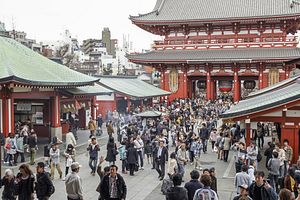Japan’s demographic problems aren’t going to go away anytime soon–not that anyone was expecting them to.
The country’s latest census figures show that its population decline is slowly and steadily marching forward. As of October 2015, Japan’s population had declined to 127.1 million people, which represents a 0.7 percent decline since the last census. Japanese policymakers, long aware of the country’s shrinking population, haven’t been able to intervene to raise birth rates in the country. Meanwhile, immigration, which is extremely low in Japan compared to other developed states, has been a politically unpopular option.
The latest census, remarkably, shows that nearly one million Japanese have disappeared since the last census was conducted in 2010. According to the internal affairs ministry, 947,000 fewer Japanese exist today. Just eight prefectures in the country saw their populations increase. The census found population increases in the capital area of Tokyo, but saw a major dip in Fukushima, which lost more than 100,000 people since 2010, primarily due to the mass evacuation after the meltdown of the Fukushima Daiichi nuclear plant after the Tohoku earthquake and tsunami in March 2011.
The Japanese government, according its own estimate in 2014, found that if nothing changes in Japan’s demographic outlook and current trends continue unabated, the country’s population will fall to just 87 million by 2060. Japan’s population will shrink by 500,000 every year over the decades. The economic ramifications of Japan’s aging workforce and shrinking population are already being felt. Despite Japanese Prime Minister Shinzo Abe’s attempts at using fiscal, monetary, and structural levers to jump start Japan’s economy after over two decades of sluggishness, the country’s labor force may already be nearly capped, leaving little room for growth.
This has led to a situation where despite Abe’s economic reforms, the economy has seen a return to multiple quarterly recessions–all this despite low unemployment. Indeed, repeated recessions may be likely as monetary policy comes to lose its power in Japan: the Bank of Japan’s recent foray into negative interest rates for new reserves show an increasing desperation to find ways to spur growth that are independent of Japan’s demographic destiny.
To address the demographic challenges the country faces, Abe and his government have made it a goal to increase the number of births per woman to 1.8. This goal remains unrealistic in the short- and medium-term and, even if it were attained, it would merely slow down the pace of Japan’s population decline. The Japanese economy would need to see 2.1 births per woman to see stable population levels.
































